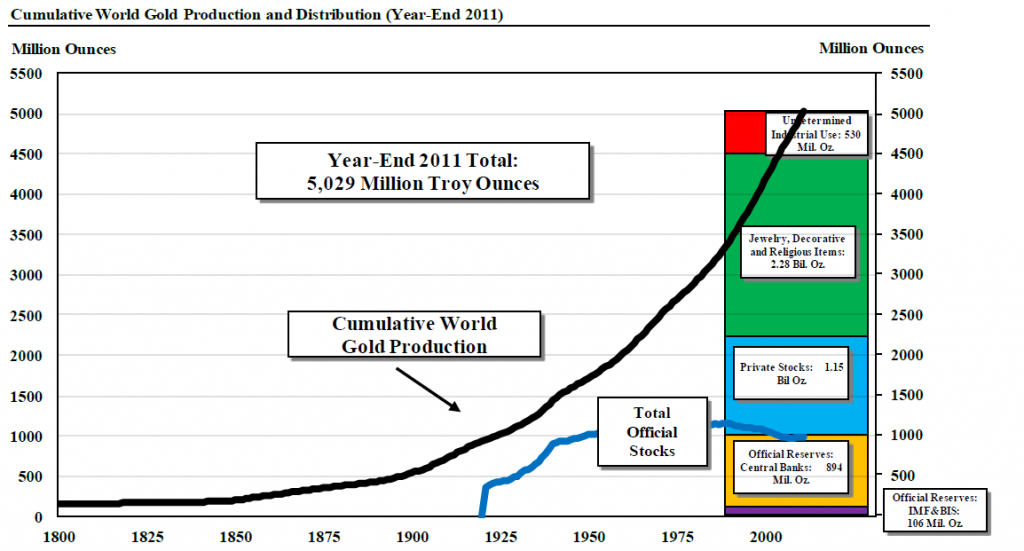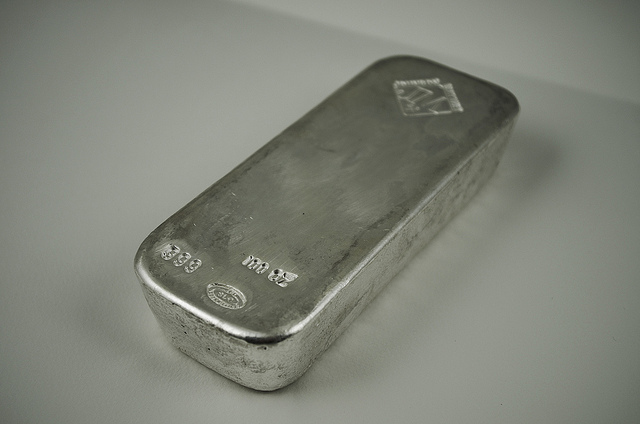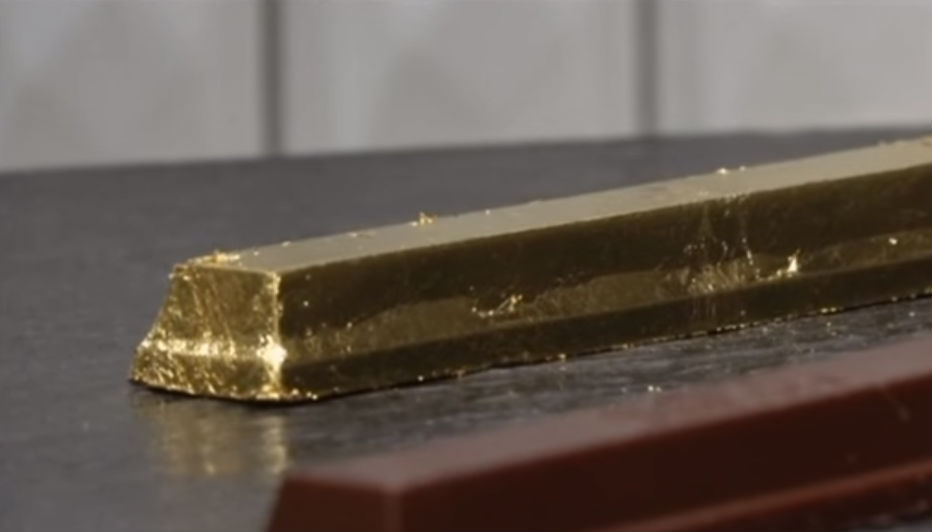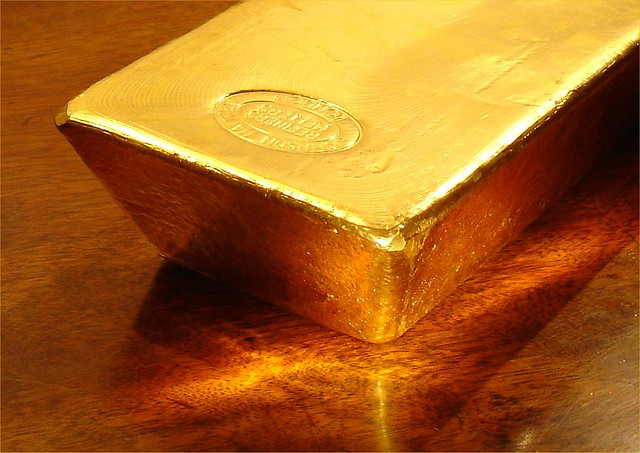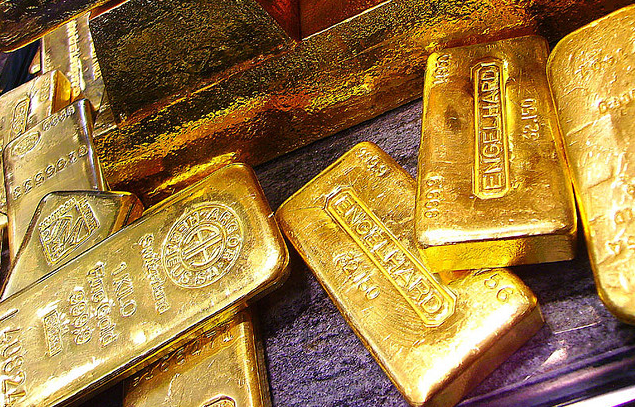Nyheter
Five billion ounces of gold
 It is estimated that in 2011 the cumulative amount of gold that has been mined throughout history surpassed five billion ounces. This is an astounding amount of gold. Interestingly, 90% of it, or 4.5 billion ounces of gold, is estimated to have been mined since 1900. Attached here is a chart that shows Cumulative World Gold Production and Its Distribution: How much has been mined, and where it is believed to exist.
It is estimated that in 2011 the cumulative amount of gold that has been mined throughout history surpassed five billion ounces. This is an astounding amount of gold. Interestingly, 90% of it, or 4.5 billion ounces of gold, is estimated to have been mined since 1900. Attached here is a chart that shows Cumulative World Gold Production and Its Distribution: How much has been mined, and where it is believed to exist.
Nearly all of this gold is estimated to be relatively available. Two billion ounces are held in gold bullion and coin form by investors and central banks. Another 2.3 billion ounces are in jewelry, religious objects, and decorative objects. Only about 530 million ounces, or slightly more than 10%, are estimated to have been lost. This chart and data are from the CPM Group Gold Yearbook 2012, released 27 March 2012, and available at CPM Group’s website.
On 17 May CPM Group will release its Silver Yearbook 2012. In that report we will show that cumulative world silver production is estimated to have surpassed 50 billion ounces in 2011, ten times as much as gold. In stark contrast to gold, about 46% of the silver mined throughout history is estimated to be lost or undetermined in its location. People will lose silver, or use in it an industrial or household application from which it does not get recovered (e.g. mirrors). People tend not to lose gold.
Notes: Official stocks include holdings of central banks, the International Monetary Fund, European Central Bank, and the Bank for International Settlements. Total disposition may not equal cumulative production due to rounding and other discrepancies in the historical data. The distribution of 154 million ounces of pre-1800 production is not able to be discerned. Additionally, the assumptions have been made that most of the gold recovered from scrap since 1977 has been from jewelry and decorative objects and the metal thus recovered largely was used in the manufacture of new jewelry.
Where does this data come from? It is a rich tradition. In the 1960s Harry Oppenheimer pulled together a team of economists and statisticians to develop estimates of how much gold had been mined through history and its rough disposition. The postwar Bretton Woods dollar-gold international currency regime was shaking to pieces and clearly was going to fail. He wanted to know if Anglo American Gold could do for gold what DeBeers did for diamonds: Serve as the buyer or seller of last resort, and thereby stabilize (if not control) the price of gold. The answer to that question was how much gold was out there in the world, and who held it. If there was a lot of gold in bullion form, readily available to the market, and it was widely dispersed among people and governments, then the gold market could not be managed as the diamond market was.
The team he created developed estimates of gold supply and demand. (They actually were employed by Charter Consolidated, one of the Oppenheimer family companies.) The reports they produced initially were for internal corporate use, but later were sold and distributed through the South African Chamber of Mines. In time Anglo American decided to stop financing this research program, and the team was disbanded. The task of annually updating the Charter Consolidated annual gold reports was scooped up by the rival mining house Consolidated Gold Fields, which did an exemplary job until it was disbanded itself after Hanson plc acquired the company in 1989. The research team was shared in parts by Consgold and J. Aron, which in the late 1960s also was establishing a commodities research department (the percursor to CPM Group).
Since the late 1960s the J. Aron Research Department and, after we left J. Aron/Goldman Sachs en masse in 1986, the CPM Group research team has diligently updated this data series each year.
[box]Denna analys är producerad av CPM Group och publiceras med tillstånd på Råvarumarknaden.se.[/box]
Disclaimer
Copyright CPM Group 2012. Not for reproduction or retransmission without written consent of CPM Group. Market Commentary is published by CPM Group and is distributed via e-mail. The views expressed within are solely those of CPM Group. Such information has not been verified, nor does CPM make any representation as to its accuracy or completeness.
Any statements non-factual in nature constitute only current opinions, which are subject to change. While every effort has been made to ensure that the accuracy of the material contained in the reports is correct, CPM Group cannot be held liable for errors or omissions. CPM Group is not soliciting any action based on it. Visit www.cpmgroup.com for more information.
Nyheter
Vad guldets uppgång egentligen betyder för världen

Guldpriset har nyligen nått rekordnivåer, över 4 000 dollar per uns. Denna uppgång är inte bara ett resultat av spekulation, utan speglar djupare förändringar i den globala ekonomin. Bloomberg analyserar hur detta hänger samman med minskad tillit till dollarn, geopolitisk oro och förändrade investeringsmönster.
Guldets roll som säker tillgång har stärkts i takt med att förtroendet för den amerikanska centralbanken minskat. Osäkerhet kring Federal Reserves oberoende, inflationens utveckling och USA:s ekonomiska stabilitet har fått investerare att söka alternativ till fiatvalutor. Donald Trumps handelskrig har också bidragit till att underminera dollarns status som global reservvaluta.
Samtidigt ökar den geopolitiska spänningen, särskilt mellan USA och Kina. Kapitalflykt från Kina, driven av oro för övertryckta valutor och instabilitet i det finansiella systemet, har lett till ökad efterfrågan på guld. Även kryptovalutor som bitcoin stiger i värde, vilket tyder på ett bredare skifte mot hårda tillgångar.
Bloomberg lyfter fram att derivatmarknaden för guld visar tecken på spekulativ överhettning. Positioneringsdata och avvikelser i terminskurvor tyder på att investerare roterar bort från aktier och obligationer till guld. ETF-flöden och CFTC-statistik bekräftar denna trend.
En annan aspekt är att de superrika nu köper upp alla tillgångsslag – aktier, fastigheter, statsobligationer och guld – vilket bryter mot traditionella investeringslogiker där vissa tillgångar fungerar som motvikt till andra. Detta tyder på att marknaden är ur balans och att kapitalfördelningen är skev.
Sammanfattningsvis är guldets prisrally ett tecken på en värld i ekonomisk omkalibrering. Det signalerar misstro mot fiatvalutor, oro för geopolitisk instabilitet och ett skifte i hur investerare ser på risk och trygghet.
Nyheter
Spotpriset på guld över 4300 USD och silver över 54 USD
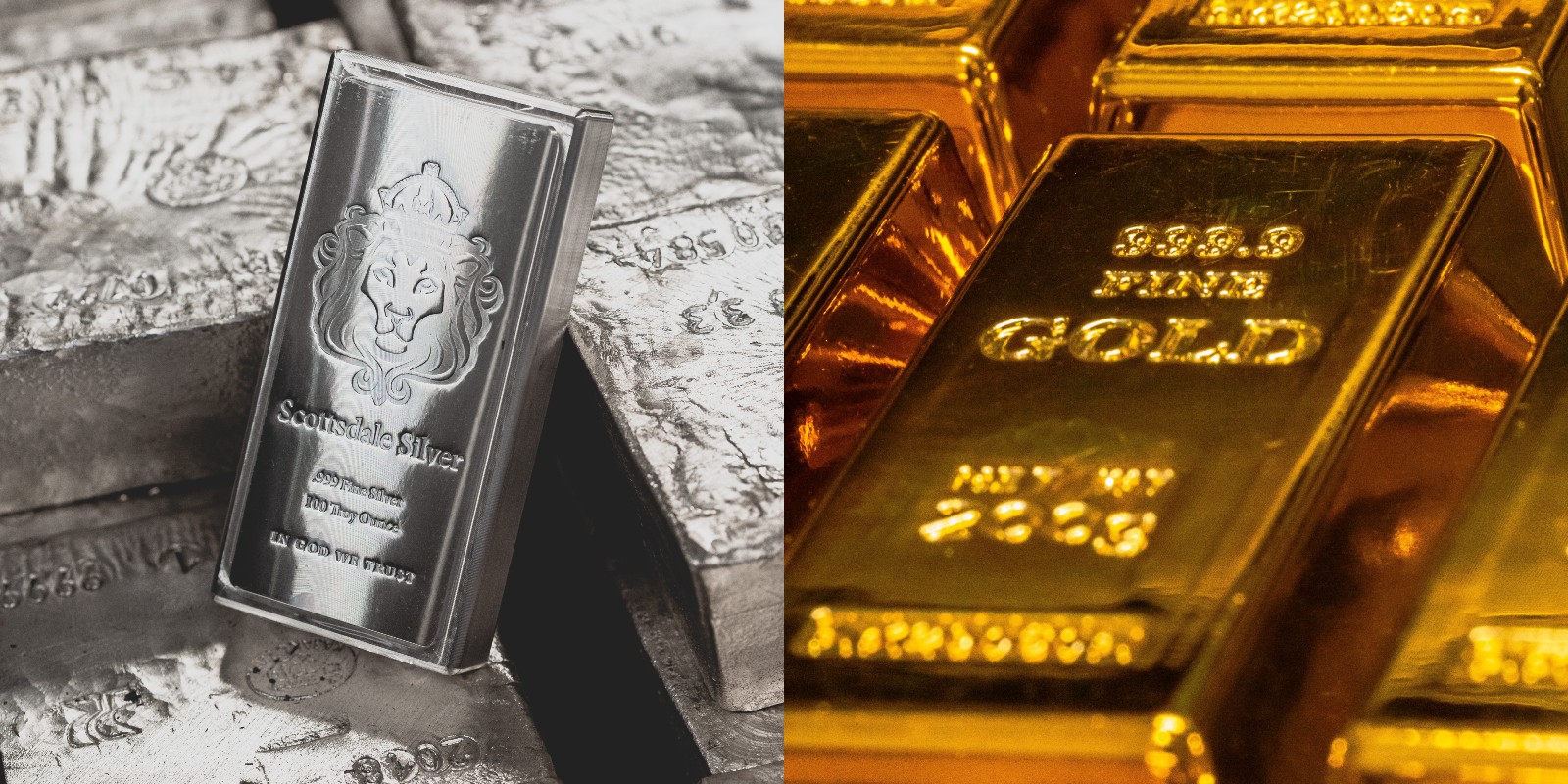
Guldpriset stiger i ett spektakulärt tempo, nya rekord sätts nu på löpande band. Terminspriset ligger oftast före i utvecklingen, men ikväll passerade även spotpriset på guld 4300 USD per uns. Guldet är just nu som ett ångande tåg som det hela tiden skyfflas in mer kol i. En praktisk fördel med ett högre pris är att det totala värdet på guld även blir högre, vilket gör att centralbanker och privatpersoner kan placera mer pengar i guld.
Även spotpriset på silver har nu passerat 54 USD vilket innebär att alla pristoppar från Hunt-brödernas klassiska squeeze på silver har passerats med marginal. Ett högt pris på guld påverkar främst köpare av smycken, men konsekvensen av ett högt pris på silver är betydligt mer kännbar. Silver är en metall som används inom många olika industrier, i allt från solceller till medicinsk utrustning.
Nyheter
Guld och silver stiger hela tiden mot nya höjder
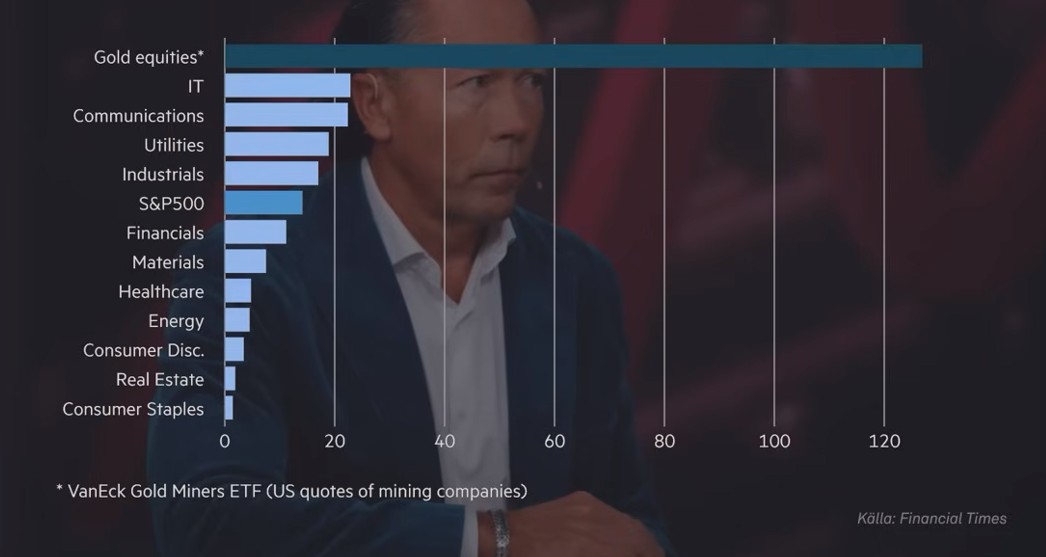
Priserna på guld och silver stiger hela tiden mot nya höjder. Eric Strand går här igenom vilka faktorerna som ligger bakom uppgångarna och vad som kan hända framöver. Han får även kommentera aktier inom guldgruvbolag som har haft en bättre utveckling än nästan allt annat. Han säger bland annat att uppgången kommer från låga nivåer och att det i genomsnitt är en mycket högre kvalitet på ledningarna för bolagen idag.
-

 Nyheter3 veckor sedan
Nyheter3 veckor sedanOPEC+ missar produktionsmål, stöder oljepriserna
-

 Nyheter4 veckor sedan
Nyheter4 veckor sedanEtt samtal om guld, olja, fjärrvärme och förnybar energi
-

 Nyheter2 veckor sedan
Nyheter2 veckor sedanGoldman Sachs höjer prognosen för guld, tror priset når 4900 USD
-

 Nyheter2 veckor sedan
Nyheter2 veckor sedanGuld nära 4000 USD och silver 50 USD, därför kan de fortsätta stiga
-

 Analys3 veckor sedan
Analys3 veckor sedanAre Ukraine’s attacks on Russian energy infrastructure working?
-

 Nyheter2 veckor sedan
Nyheter2 veckor sedanBlykalla och amerikanska Oklo inleder ett samarbete
-

 Nyheter4 veckor sedan
Nyheter4 veckor sedanGuldpriset uppe på nya höjder, nu 3750 USD
-

 Nyheter2 veckor sedan
Nyheter2 veckor sedanEtt samtal om guld, olja, koppar och stål


